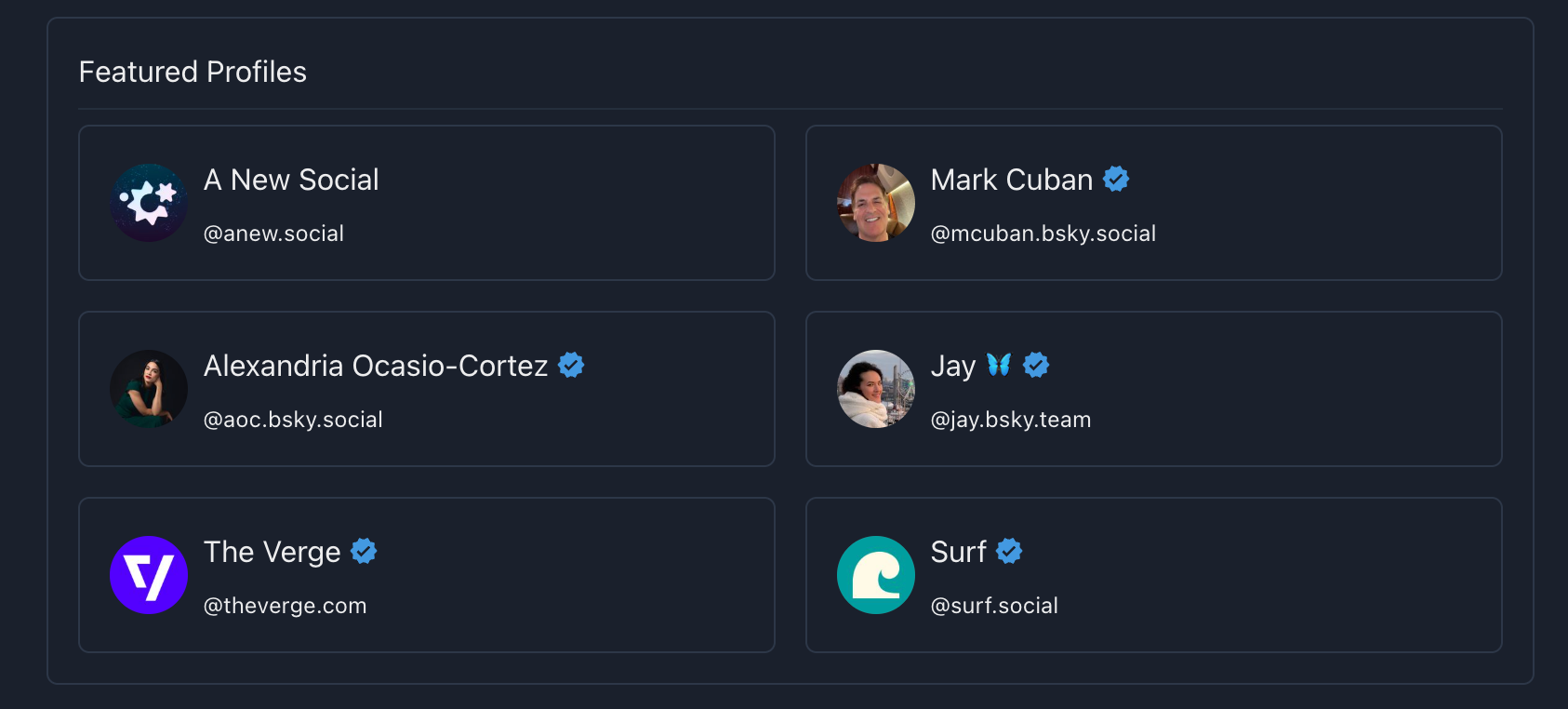Launching Verification on AT Explore
AT Explore now supports profile verification, giving users a simple way to see which accounts are authentic. It’s a small step toward building trust and better discovery across the network.

I first started working on AT Explore as a way to learn more about the AT Protocol. As I spent more time on it, I started to think about it as a possible discovery tool for content across the network—making it easier to surface posts, profiles, and other data from applications across the protocol.
Bluesky recently added verification, making it a hot topic across the network. That got me thinking: if AT Explore aims to help users discover content, it should also help them trust what they’re seeing.
So, I’ve added verification to AT Explore. Now, whenever you view a profile or post, you’ll see a checkmark—just like you would on Bluesky or other platforms.

Whenever a checkmark appears, an explainer will clearly show which verifier confirmed the profile’s authenticity.

The goal is simple: give users more confidence that the content they’re exploring comes from genuine sources. As discovery grows within AT Explore, offering this added layer of transparency helps users navigate the protocol with greater trust.
How it Works
It was important to me that verification leveraged the protocol itself. Verification on AT Explore is built in the same way it is on Bluesky. Verification records are created in a user’s personal data server (PDS). I maintain a list of trusted verifiers and use records from those verifiers to determine whether a profile is authentic. Currently, this list operates outside of the protocol, even though my goal is to eventually move it fully on-chain and protocol-native.
I’m starting with essentially the same list of trusted verifiers that Bluesky uses, with myself and AT Explore also acting as verifiers. Eventually, I'll expand on this list, but I decided this was a good place to start.
Trusted Verifiers:
One of the great things about the way Bluesky designed verification is that verification records are published to a user’s PDS, so anyone can see whom they’ve verified. You can visit any of the profiles above to view their verification records. I’ve added improved support for browsing verification collection records in AT Explore, making it easier and more user-friendly to view them.

Deer.social, an alternative Bluesky client, has done a nice job of opening verification up to anyone and allowing users to create records. Bluesky hasn’t built a similar feature yet, so it’s still somewhat limited. I’m using Deer to manage both my own verification records and AT Explore’s. I would like to see more users create their own verifications, and I’d eventually like to expand AT Explore to surface those as well.
What's Next?
The goal is to evolve AT Explore into a discovery tool, and verification will be an important part of that journey. Soon, I’ll be adding a page that makes it easier to find verified users and explore verification records. These records will be searchable, and I plan to surface some of the more prominent verified profiles as recommendations.
I also want to give users more control: a setting will allow you to hide badges from specific verifiers—or turn off verification badges entirely. This lets each user decide how much weight to place on verification and which verifiers they trust.
Longer term, I’d like to explore ways to better leverage the protocol itself for managing trusted verifiers and verification data—moving toward a more open and decentralized approach that aligns with the spirit of the network.
If you have any thoughts or recommendations, feel free to send me a message on Bluesky or Signal. I’d love to hear your feedback!


